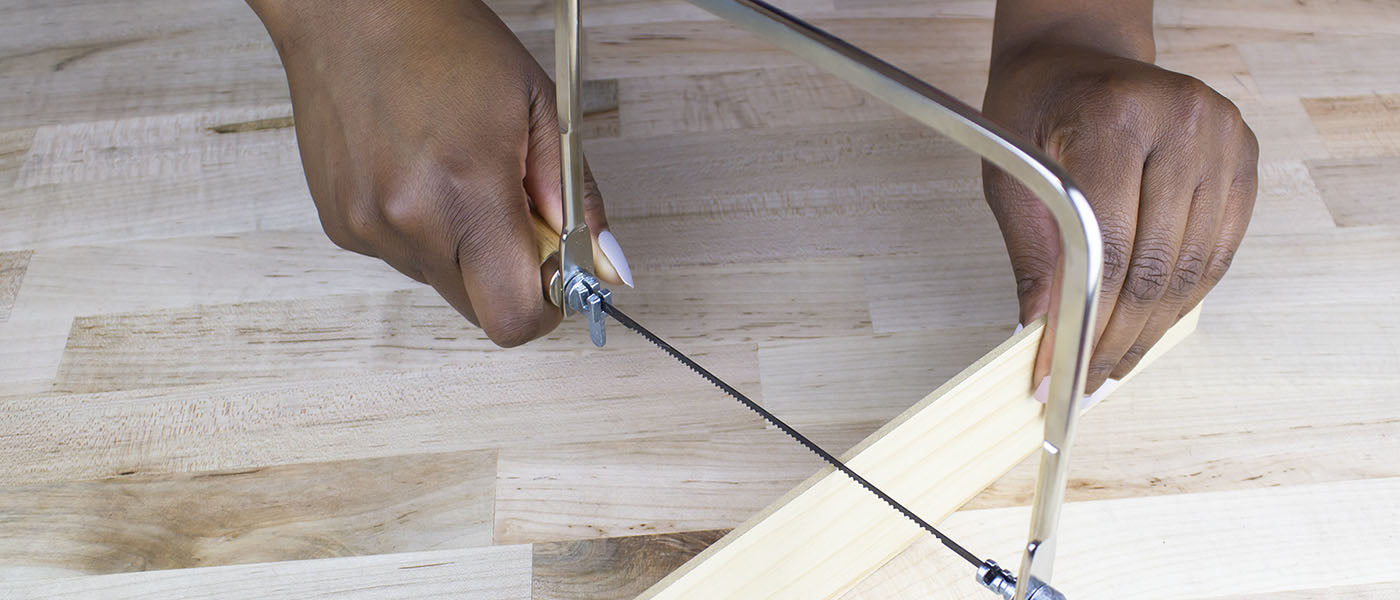
What Is a Coping Saw Used For?
A coping saw is a U-shaped or C-shaped hand saw. Thin metal blades are removable with the use of thumbscrews at either end of the blade housing, which are located on either end of the frame. Read more about this feature in our article on How to Change a Coping Saw Blade.
It was most likely named after the coping joint, a carpentry term, for which this saw was initially used. Christopher Schwarz of Lost Art Press wrote up a quick history of the coping saw in an article we recommend. It’s a quick read.

Coping saw features:
- Throat size — This is the span between the blade and the frame. This measurement varies by manufacturer. Our coping saw measures 4.5”.
- Tension thumb screws — Located at either end of the frame, these screws adjust the tension of the blade.
- Handle — Made from wood or other materials.
Common uses for a coping saw:
- Shaping the ends of baseboard molding pieces so that they fit neatly around a corner or in a corner.
- Frames or decorative wall molding corner shaping, so two adjacent pieces sit together neatly when joined.
- Decorative cutouts in woodwork, like motifs in chair backs.
- General furniture woodwork.
Benefits of using a coping saw:
- The saw blades are thin and flexible, allowing for precision and change of direction of the cut.
- Great for cutting shapes like curves or scalloped lines.
- Change out the blade to a different TPI if needed.
- Small yet mighty.
Materials to use with coping saws:
- Wood and wooden molding
- Plastics, PVC pipes
- Some metals

Think safety! Wear PPE when working with a coping saw and other woodworking tools. The saws are sharp and create dust. And to protect your tools, always store them safely and covered, especially the sharp cutting edges.